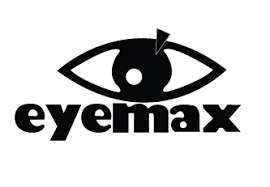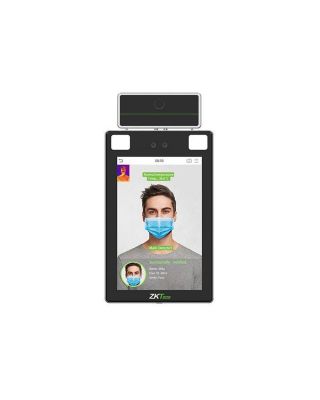Temperature-Monitoring
Thermographic temperature-monitoring/screening solutions have gained immense popularity since April 2020 for organizations and businesses that seek to maintain a safer working environment by screening the temperature of their employees, patrons, and vendors--anyone who requires physical access to their site. When this layer of protection is added, it gives comfort to those who visit their site because they know that no one with an elevated temperature is admitted. An elevated temperature is one of the main symptoms of Covid-19/coronavirus. This, in turn, helps to reduce the spread of the virus in the workplace. Beware of other companies advertising similar solutions who claim to prevent the disease, detect fever, or detect those who are infected with Covid19.*
Solutions in this category with facial recognition have the ability to identify and blacklist/whitelist people who have elevated skin temperatures readings. Some of them such as the Dahua and ZKTeco solutions have mask-wearing detection as well. The ZKTeco products have a bonus feature: a 3rd-party time and attendance module with integration into virtually any payroll system, which reduces and in most cases virtually eliminates time spent running payroll. (Contact us for more information on the T&A module's integration into payroll or to schedule a demo to see how it benefits your specific organization's industry.)
Thermographic temperature-monitoring/screening solutions generally consist of specialized equipment including the following:
1) Dual-sensor hybrid camera with HD visible sensor for facial detection plus lower-resolution thermal sensor to measure heat. This gets plugged into PoE or ePoE. Alternatively use 12v DC plus the wired Ethernet connection.
2) Blackbody calibration tool, which measures the temperature in the testing environment and only gets plugged into AC power; not network.
3) Network Video Recorder or NVR records the streams from the camera(s), allows for facial recognition database, sends alarms to client software and mobile clients, and allows for other functionality. For example, the Dahua DHI-NVR5216-16P-I 4TB allows for metadata search (search by gender, age group, beard, glasses) as well as pushes facial recognition and AI human and vehicle perimeter protection to regular Onvif cameras.
4) Network switch or router, depending on how the network is setup. It's always best to separate the camera network from the main network to improve security and so that camera bandwidth does not interfere with the main network's bandwidth. This can be done using a dual-NIC NVR or a network switch with vLAN capabilities. Ask us or consult an IT professional for more information.
5) Someone such as a guard or a manager to monitor activity and act on alarms. In most cases, the guard is not required to be in the same room as the temperature-monitoring solution; however, when alarms are received, there needs to be a protocol in place to take proper action.
The Dahua temperature camera can be physically installed, or it can be mounted on a tripod for mobile or temporary sites. We recommend the use of tripods. Proper calibration of the blackbody would be crucial to getting the system to work accurately. Without tripods, it would be more difficult to position the cameras and the blackbody at the proper height range and distance away from each other. They can be installed permanently without tripods, but again, they would have to be at the proper height and distance from each other.
Whichever brand of temperature-scanning solution you choose, the best practice is to conduct all temperature screening indoors or use a tent that can shield wind and weather if conducting test outdoors. The blackbody, if required, would have to be in the background of the view of the target objects, within the camera's field of view.
Frequently Asked Questions:
Q1) How do devices like this work with the change in temperature?
A1) If the solution has a blackbody (Dahua), then that blackbody will maintain the calibration of the temperature in the room. If no blackbody (ZKTeco), then you would enter the ambient temperature of the room into the ZK software before you start testing people. Either solution is best used in a climate-controlled room, away from the vent of the heater or air conditioner. The ambient room temperature should be calibrated with the ZK any time the room temperature changes by a few degrees. The ZK has a temperature deviation setting if the room temperature has slight fluctuations from the ambient temperature, but it’s not designed for major changes in temperature.
Q2) Do people need to 'acclimate' before walking through it?
A2) Yes, to both types of solutions. 1-5 minutes is ideal. The amount of time to acclimate can vary from person to person but does happen quite rapidly.
Through extensive testing by Dahua engineers, people who spend extended amounts of time exposed to the cold will have lower reported skin temperatures. Initial tests happened with people who were walking 15-20 minutes in 38° F weather and showed temps of 95° F - 96° F upon first entry from outside. Then, after 1-2 minutes, having been inside a 70° F lobby, those skin temperatures went back to normal readings of 97.x° F.
Hot weather is similar to cold weather but with quicker acclimation. The body can rid itself of heat through more efficient release areas like the feet, back, under-arms, top of the head, and the forehead. With the forehead, removing perspiration is the key. The moisture droplets will throw off the accuracy.
In the typical scenario of someone coming inside from the parking lot from their car, they will likely not have enough exposure to the outside elements to drastically impact the readings. Just ensure they have removed any head-coverings, eyeglasses or sunglasses, and have brushed their hair away from their eye and forehead in order to achieve maximum accuracy.
Q3) Our facilities have multiple climate-controlled areas from cookers to freezers, how do we get accurate readings from people coming in and out of those areas?
A3) These products should be used indoors, between the outdoor entrance of the building and where the walkway branches off for access to the rest of the building. They should be used for the purpose of temperature checks when people first walk inside after they have acclimated to the indoor temperature. You can use them at multiple entrances, but it does not make sense to use the temperature check feature between room-to-room or between internal rooms. You can still use the facial/palm ID feature on the ZKTeco to grant access to a secure area or to have access to quick and easy reporting to know how many times someone accessed a particular room.
Dahua has their temperature kits deployed at various seafood processing plants, and as you can imagine, they have coolers and deep-freeze chambers. When the workers leave those areas, their clothing, most notably the boots are very cold, but their exposed skin is still at about the normal temperature because of the additional clothing they wear to keep warm.
Temperature Monitoring Guide and Report
For an extensive guide on comparing numerous commercial-grade temperature monitoring options on the market, as well as to learn the Ten Essential Factors to Consider when Choosing a Thermal Temperature-Monitoring Solution, check out our blog post here: https://customvideosecurity.com/research/blog/thermal-temperature-monitoring-solutions-to-reduce-the-spread-of-covid-19/.










































